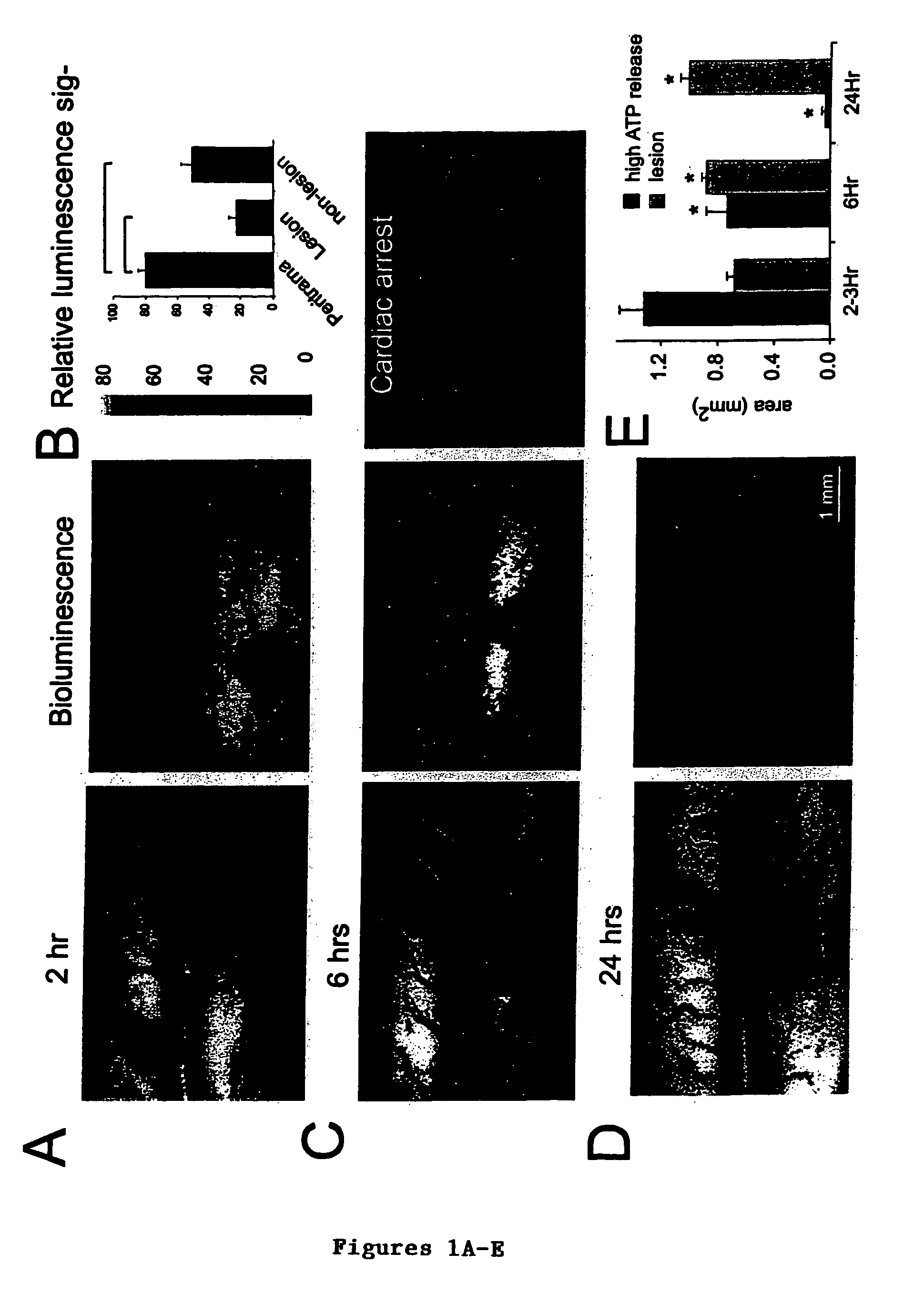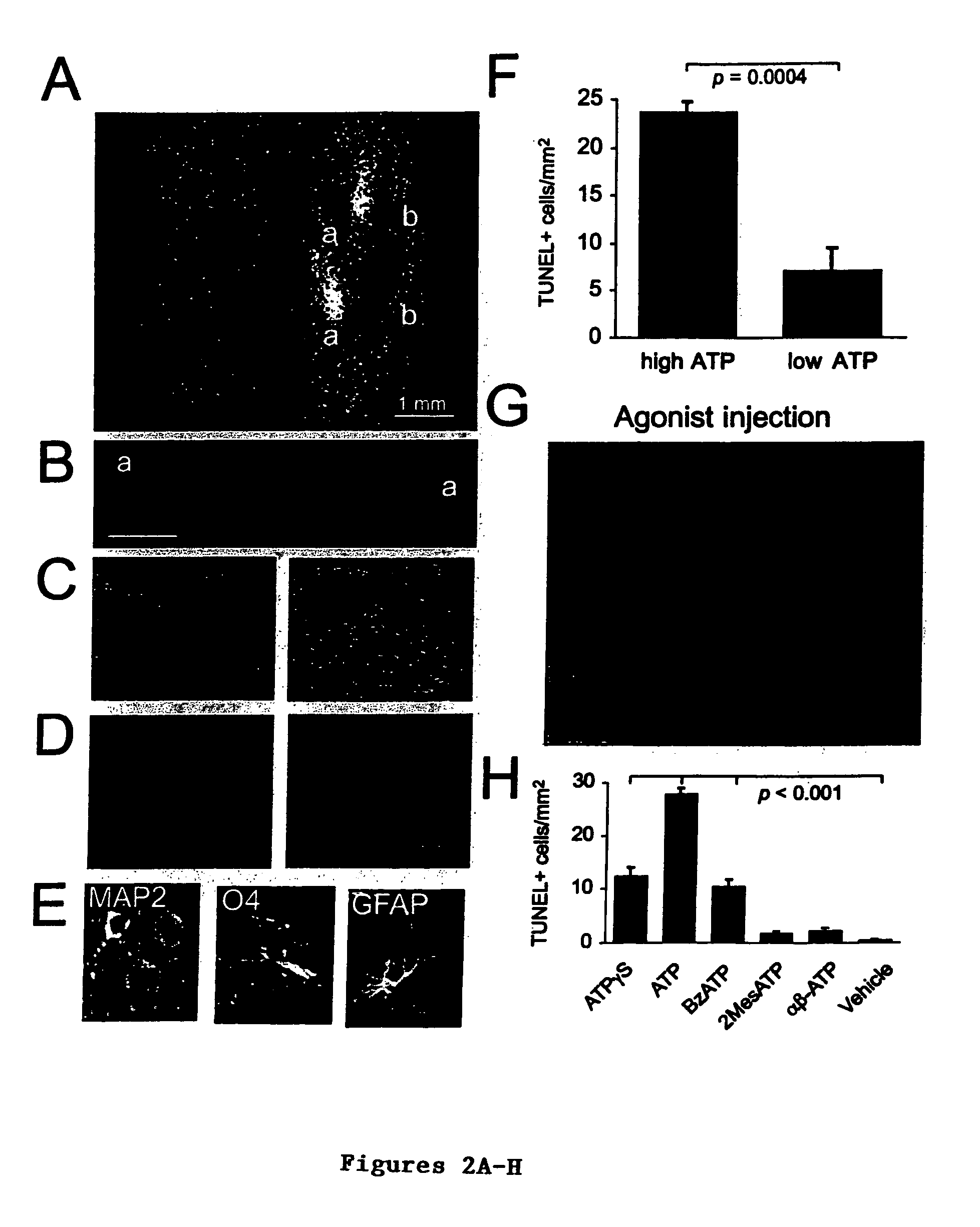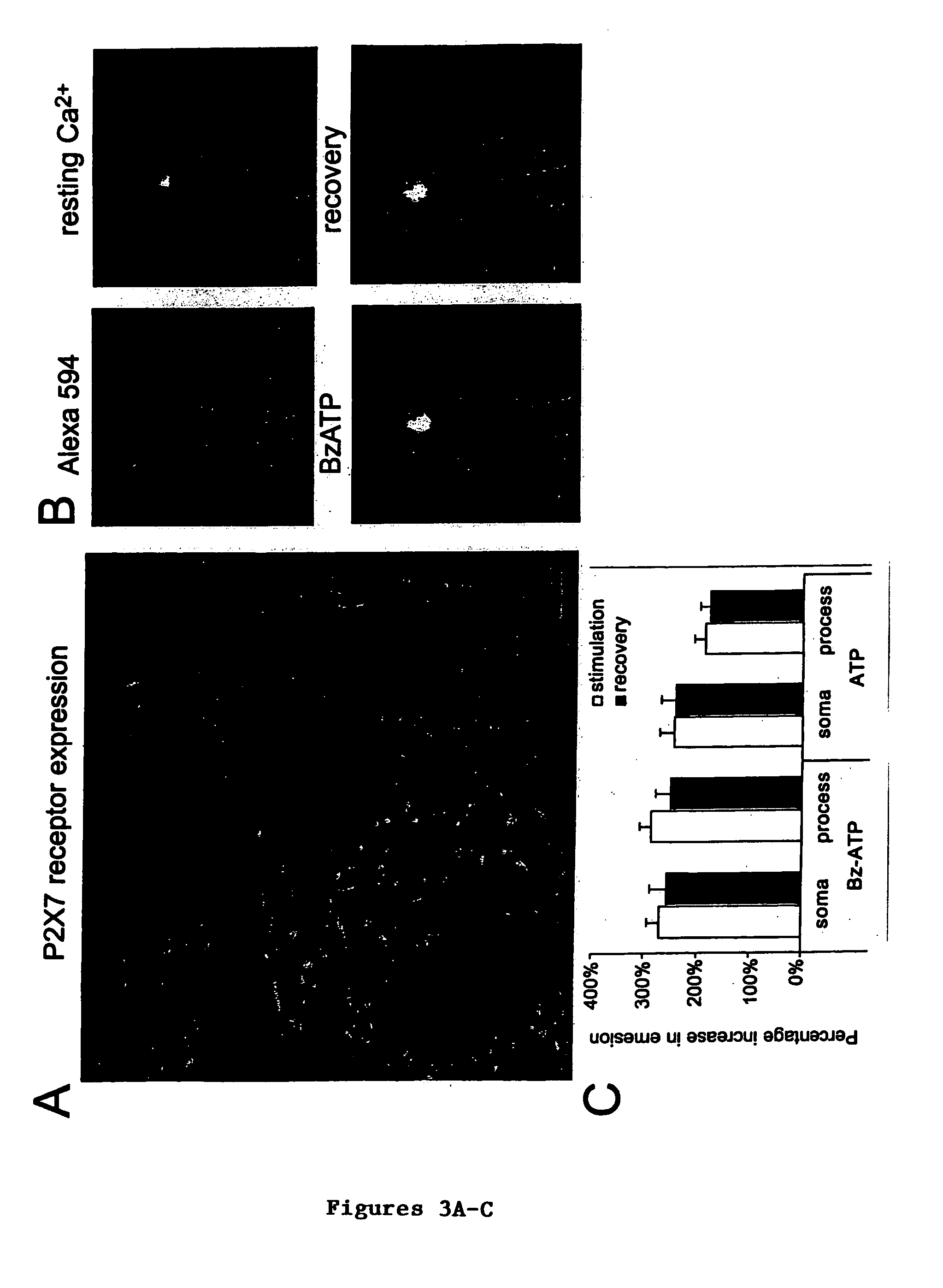Purine receptor inhibition as a therapeutic strategy in spinal cord and brain
a technology of purine receptors and inhibition of purine receptors, which is applied in the field of purine receptor inhibition as a therapeutic strategy, can solve the problems of life-long paraparesis or quadriparesis, no effective treatment of spinal cord pathology in any of these conditions, and a major public health problem of acute spinal injury
- Summary
- Abstract
- Description
- Claims
- Application Information
AI Technical Summary
Problems solved by technology
Method used
Image
Examples
example 1
Traumatic Model and Agonist Injections
[0042]Adult female Spague-Dawley rats (220-250 g) were anesthetized with pentobarbital (50 mg / kg i.p.). When unresponsive, a double level laminectomy was performed at the T11 and T12 vertebrae. Dura was left intact, and injury was produced by the NYU weight-drop impact by dropping a 5 g rod at an experimental height of 10 mm (Basso et al., “A Sensitive and Reliable Locomotor Rating Scale for Open Field Testing in Rats,”J Neurotrauma 12:1-21 (1995), which is hereby incorporated by reference in its entirety). The tip of the rod was reduced to 1 mm to avoid direct traumatic injury of the dorsal venous complex. ATP and agonists (10 mM, 2 μl) were stereotaxically injected into T12 just lateral to the dorsal horn. All agents were purchased from Sigma.
example 2
Bioluminescence Imaging of ATP
[0043]ATP release from the exposed spinal cord was imaged by chemiluminescence in real time as described in (Arcuino et al., “Intercellular Calcium Signaling Mediated by Point-Source Burst Release of ATP,”Proc Natl Acad Sci USA 99:9840-9845 (2002), which is hereby incorporated by reference in its entirety). Luciferase (0.132 mg / ml) and luciferin (0.332 mg / ml) are added an artificial CSF solution containing (Nedergaard et al., “Characterization of cortical Depolarization Evoked in Focal Cerebral Ischemia,”J Cereb Blood Flow Metab 13:568-574 (1993), which is hereby incorporated by reference in its entirety). Dura was kept intact, and the enzyme mixture delivered by a silastic tube inserted under dura at a rate of apprx. 1 ml / hr (Minipump RT-202, VWR). Light production from the luciferin-luciferase reaction was imaged by a liquid nitrogen-cooled CCD camera (VersArray 1300B, Princeton Instruments) using a 50 mm camera lens (Olympus), 4×4 binning, and 30 s i...
example 3
Functional Outcome Analysis
[0044]The Basso, Beattie, and Bresnahan (BBB) 21-point open field locomotor rating scale was utilized for evaluation of hindlimb movements (Basso et al., “A Sensitive and Reliable Locomotor Rating Scale for Open Field Testing in Rats,”J Neurotrauma 12:1-21 (1995), which is hereby incorporated by reference in its entirety)). The animals were evaluated daily for 2 weeks after injury and later on a biweekly basis.
PUM
| Property | Measurement | Unit |
|---|---|---|
| distance | aaaaa | aaaaa |
| resting membrane potential | aaaaa | aaaaa |
| resting membrane potentials | aaaaa | aaaaa |
Abstract
Description
Claims
Application Information
 Login to view more
Login to view more - R&D Engineer
- R&D Manager
- IP Professional
- Industry Leading Data Capabilities
- Powerful AI technology
- Patent DNA Extraction
Browse by: Latest US Patents, China's latest patents, Technical Efficacy Thesaurus, Application Domain, Technology Topic.
© 2024 PatSnap. All rights reserved.Legal|Privacy policy|Modern Slavery Act Transparency Statement|Sitemap



